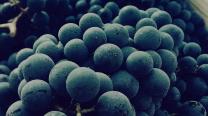Appellations
2018 Vintage Report

Fresh from Bordeaux and a week’s tasting the nascent 2018s, we are pleased to report that it is an exceptional vintage of many highlights. Quality can be variable but the deep and palate-staining reds are the star of the show. They show fantastic body and structure generally, and there are some unquestionable jewels.
The Weather – A Year of Two Halves
2018 started off cool and wet. Spring rain was very welcome to begin with, replenishing water tables, but also brought with it the problem of mildew, which would affect the quantity of the crop but not the quality. The vineyards required plenty of attention but by July the vines were then treated to a 3 month-long bout of sunshine and dryness. August and September were the hottest since 2003, but crucially cool nights in 2018 (not the case in 2003) helped the grapes to retain acidity. By harvest time, good weather meant an extremely long picking window with Chateaux able to choose when and what to pick without pressure, according to their style and preference. Overall, fruit quality was exceptionally even: small concentrated berries of fantastic ripeness and beautifully healthy thick skins, full of colour and tannin. The Cabernets achieved excellent ripeness, Cabernet Franc shone once again and the Merlot showed impressive density and power.
Style of the Wines
This is a year where the glorious summer climate shows. Extreme ripeness and tannins levels were potential pitfalls making 2018 a complicated vintage in the cellar. The wines are dark and deeply coloured, with more power and density than in 2009 or 2015, and some properties had their highest ever recorded IPT (tannin index), especially in the Northern Medoc where alcohols were also higher. We heard many times that Chateaux had to take a different approach in cellar - shorter time on the skins, delicate extraction and cooler fermentations - to avoid extracting excessive or harsh tannins. The careful, gentle approach paid off and the vintage at its best offers beautifully crafted wines with tightly packed fruit supported by massive frames and velvety tannins. Alcohols and pH levels are generally higher than usual but the very best wines have fresh fruit aromatics together with dancing acidity and a sense of finely tuned balance, and these could age for decades.
Volumes
Right Bank - After the tiny crop in 2017, most producers in Pomerol and Saint Emilion are delighted to have a return to normal yields.
Left Bank – In the Northern Medoc (St Estephe, Pauillac & St Julien) yields are generally lower than the past three years. Margaux and Pessac-Leognan have in most cases made more wine than in 2017, but there are notable exceptions with several prominent organic and biodynamic Chateaux harvesting only a fraction of the normal crop - notably Pontet Canet & Palmer (where production is down by two thirds) and Smith Haut Lafitte (production cut by half).
White Wines
Whites were harvested early, with ripe fruity flavours on the yellow stone fruit side. This is a good rather than great vintage overall. The very best picked early and show more minerality and vibrancy and are wonderful successes.
Sauternes
Good weather lasted until mid-October and the rain that followed benefitted Sauternes producers with botrytis at last. These are sweet wines of lovely overall quality.